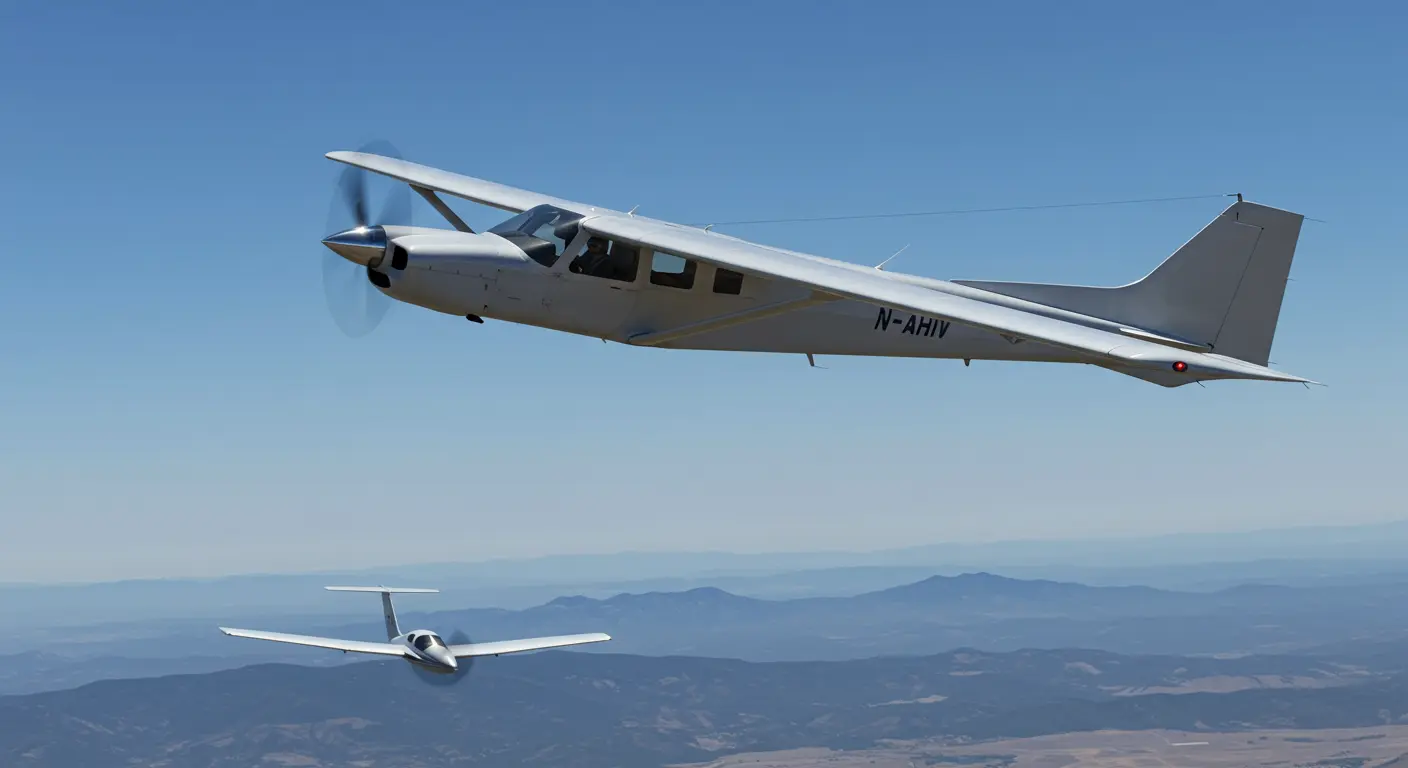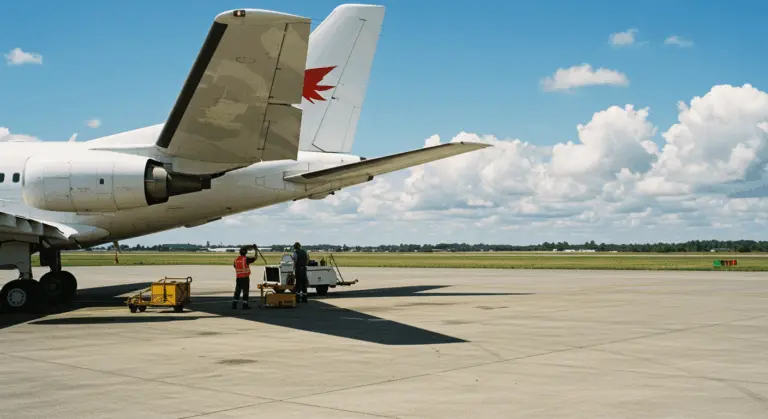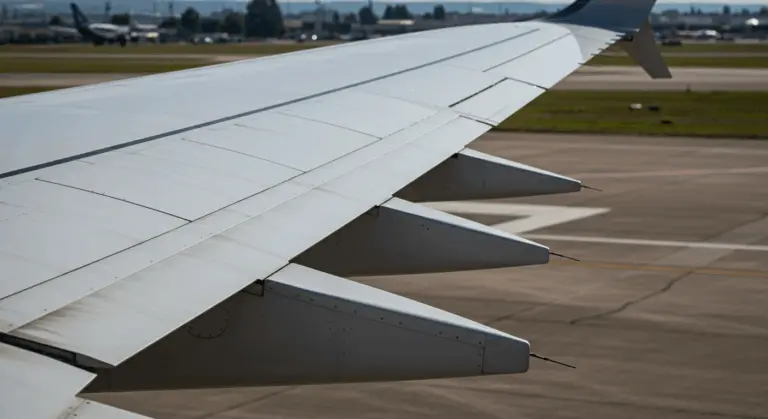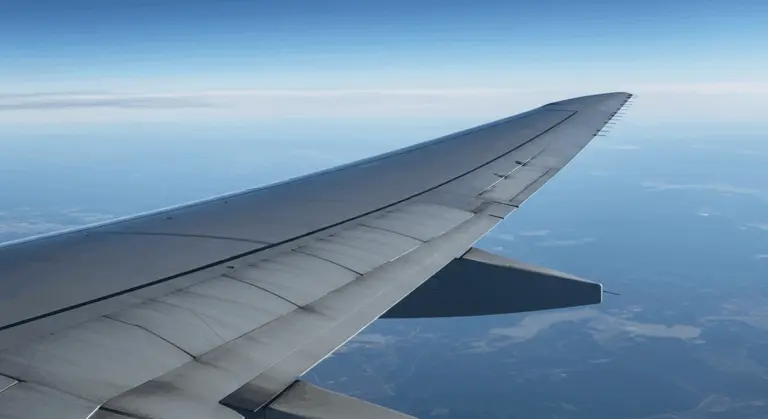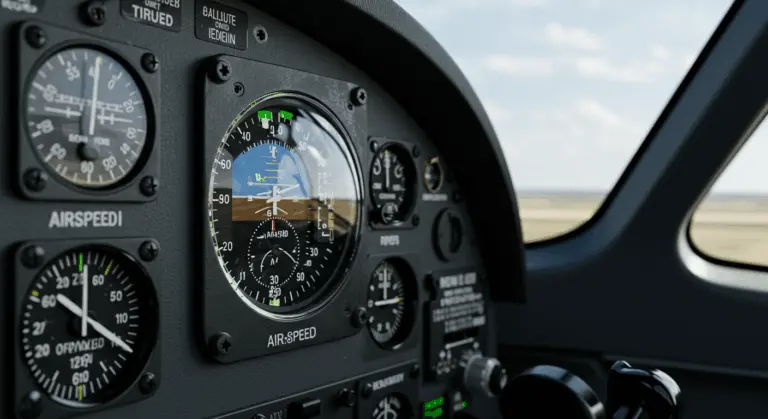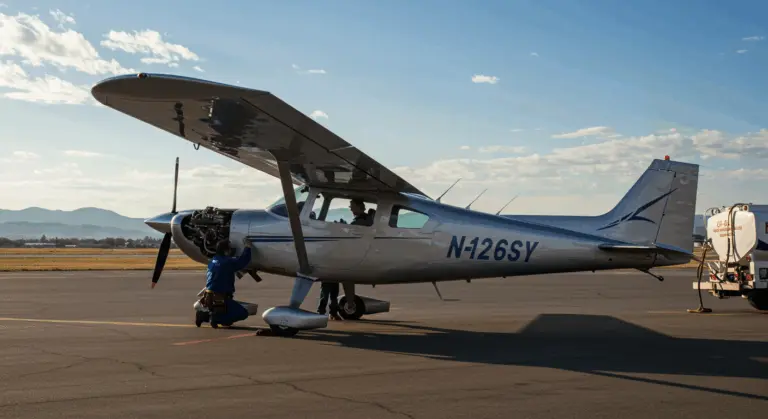High Wing vs Low Wing – Understanding the Differences
Understanding High Wing and Low Wing Aircraft
The fundamental distinction between high-wing and low-wing aircraft lies in wing placement relative to the fuselage. High-wing aircraft feature wings mounted above the fuselage, while low-wing designs position them below. This design choice creates significant variations in performance, handling characteristics, and practical applications.
High-wing aircraft offer inherent stability and remarkably forgiving flight characteristics. This natural tendency to self-correct makes them exceptional choices for training, observation, and recreational flying. The design often includes wing struts for support and separate structural spars for the wings and landing gear.
Low-wing aircraft, by contrast, deliver superior aerodynamic performance and enhanced maneuverability. The fuselage rests on the wing spar, creating an integrated structure that supports both the wings and landing gear. This structural advantage explains why most commercial airliners and fighter jets employ low-wing configurations—they deliver superior aerodynamic efficiency and exceptional agility.
Visibility presents another crucial distinction. High-wing designs provide exceptional downward views, making them ideal for sightseeing, photography, or search operations. Low-wing aircraft, however, offer unobstructed upward and lateral visibility—particularly beneficial during turns, though at the cost of limited downward sight lines.
High Wing Aircraft – Key Features
The most notable advantage is superior ground visibility. With wings positioned above the fuselage, pilots enjoy an unobstructed view of terrain below—often enhanced by expansive panoramic windows that transform these aircraft into ideal platforms for observation, photography, and search missions.
The elevated wing position provides substantially better ground clearance than low-wing alternatives. This generous clearance proves invaluable when operating from unprepared or rough surfaces, dramatically reducing the risk of wing damage. This makes them popular for bush flying, humanitarian missions, and operations in remote areas with limited infrastructure.
High-wing configurations typically provide more spacious interiors and remarkably convenient cabin access. Without wings cutting through the cabin area, manufacturers can craft more generous interiors with intuitive entry and exit points. Passengers can often board without climbing steps or navigating around wing structures, which is especially beneficial for those with mobility limitations.
Despite their stability, high-wing aircraft present several operational challenges:
-
Structural Demands: They require reinforced landing gear to support the fuselage hanging below the wings.
-
Maintenance Access: Reaching engines and wing components often requires ladders or platforms, complicating maintenance.
-
Crosswind Handling: They are more susceptible to crosswinds during takeoff and landing.
-
Refueling: Fueling often requires climbing onto the wing, which can be cumbersome.
Low Wing Aircraft – Key Features
Low-wing aircraft configurations offer distinct advantages that have made them popular across numerous aviation applications. Their primary strength lies in the structural integration of landing gear directly into the wing assembly—a design that enables the aircraft to withstand greater forces during takeoff, landing, and turbulent conditions while enhancing overall durability and safety margins.
The inherently lower center of gravity significantly improves both ground stability and in-flight maneuverability. This aerodynamic advantage allows low-wing aircraft to operate effectively across broader speed and altitude ranges than their high-wing counterparts, with strategic wing placement enhancing both roll stability and lift efficiency.
Low-wing designs offer several practical advantages:
-
Maintenance Access: Engines and other critical components are easily accessible from the ground, simplifying maintenance.
-
Visibility in Turns: Pilots have a clear view in the direction of a bank or turn, as the lower wing does not obstruct it.
-
Easier Refueling: Fuel ports are typically at ground level, making refueling simpler and safer.
The sleek aerodynamic profile of low-wing aircraft provides superior speed characteristics and crisp handling responsiveness. This configuration typically yields improved fuel efficiency through reduced drag profiles, making these aircraft significantly more economical for long-distance operations. The shorter, less drag-inducing landing gear design further contributes to their aerodynamic efficiency.
Low-wing aircraft excel in providing clear visibility of airspace above and to the sides—a crucial advantage for traffic pattern operations. Though wings restrict downward visibility during level flight, this limitation is more than offset by clear views during turns—a key reason these configurations dominate commercial and aerobatic flying.
Aerodynamic Differences Between High Wing and Low Wing Aircraft
High-wing aircraft experience greater profile and interference drag at the wing-fuselage junction, resulting in diminished cruise performance and elevated fuel consumption. The airflow disruption at this critical junction generates turbulence that demands additional power to overcome.
Low-wing configurations benefit from cleaner aerodynamics and reduced drag profiles. The wing-fuselage junction in low-wing designs typically generates minimal interference drag, enabling these aircraft to achieve notably faster cruise speeds while consuming less fuel. This aerodynamic efficiency makes low wing aircraft particularly suitable for long-distance travel and applications where performance is prioritized over other considerations. The upward angle (dihedral) commonly found in low wing designs further enhances roll stability while maintaining aerodynamic efficiency.
Wing geometry also varies significantly between these configurations. High wings tend toward flatter profiles, strategically positioned to maximize cabin space and cargo capacity. This approach deliberately prioritizes utility over pure aerodynamic performance. In contrast, low wings typically feature more sophisticated airfoil designs optimized for speed and efficiency, with the added benefit of allowing landing gear integration directly into the wing structure rather than requiring separate mounting points.
Regarding handling characteristics, the inherent stability of high-wing aircraft creates a forgiving environment for novice pilots, while the enhanced responsiveness and agility of low-wing aircraft often appeal to those pursuing aerobatic and sport flying.
Stall Characteristics of High Wing vs Low Wing
Stall behavior reveals one of the most critical distinctions between high-wing and low-wing aircraft—differences that can profoundly impact flight safety and pilot experience. These differences are crucial for pilots to understand, especially when operating near critical angles of attack.
High-wing aircraft provide more pronounced and reliable warning signs before entering a stall. As these aircraft approach stall conditions, pilots experience pronounced buffeting through the airframe and controls—nature’s own alert system. This buffeting occurs because the disturbed airflow from the wings hits the fuselage and tail surfaces more directly. Additionally, high wing designs tend to inherently resist stalls due to their natural stability characteristics, giving pilots more time to recognize and correct the situation. The decreased elevator effectiveness that accompanies pre-stall conditions in high wing aircraft further serves as a tactile warning that the aircraft is approaching its aerodynamic limits.
Low-wing aircraft, provide fewer and more subtle stall warnings. These aircraft tend to enter stalls with deceptive smoothness and minimal pre-stall buffet—a characteristic that can catch inexperienced pilots off guard. The cleaner airflow patterns around low wing configurations mean that the disruption of airflow during approaching stall conditions may not translate into the same level of physical feedback in the cockpit. This characteristic requires pilots of low wing aircraft to develop greater sensitivity to slight changes in control feel and aircraft performance to anticipate stall conditions effectively.
These contrasting stall behaviors directly reflect each design’s fundamental stability profile. The inherent stability of high-wing aircraft naturally aids self-correction during stall recovery. Meanwhile, the enhanced roll performance of low-wing aircraft proves advantageous for precise control inputs during recovery—when managed skillfully.
Ground Effect and Its Impact
Ground effect represents a fascinating aerodynamic phenomenon that manifests when aircraft operate in proximity to the ground—typically within one wingspan of the surface. This effect creates a noticeable change in the aircraft’s performance characteristics, with important implications for both high wing and low wing configurations.
As an aircraft approaches the ground, airflow beneath the wings becomes compressed between the wing’s lower surface and the earth below. This compression disrupts normal wing tip vortices that generate induced drag, yielding two significant benefits: enhanced lift and reduced drag. The practical result is that the aircraft experiences what pilots often describe as a ‘cushion of air’ or ‘floating effect’ during takeoff and landing phases.
Ground effect’s influence varies dramatically between high-wing and low-wing aircraft designs. Low-wing aircraft experience more pronounced ground effect due to their wings’ proximity to the surface. This stronger ground effect can be advantageous during landing, as it helps the aircraft maintain lift at lower speeds, potentially allowing for smoother touchdowns. However, it can also create challenges for inexperienced pilots, as the aircraft may ‘float’ down the runway during landing, using more runway length than anticipated.
High-wing aircraft, with wings positioned farther from the surface, generally experience less dramatic ground effect influence. This diminished influence means high-wing aircraft may demand more precise speed control during landing, yet they remain less susceptible to the unexpected floating that can surprise low-wing pilots. During takeoff, high wing aircraft may need to rotate more deliberately to break free from ground effect and establish a positive rate of climb.
Understanding ground effect becomes crucial for pilots transitioning between wing configurations, as the varying intensity of this phenomenon demands significant adjustments to landing and takeoff techniques. Proper training and awareness of these differences help pilots maintain safe operations regardless of the wing configuration they’re flying.
Maintenance Access and Considerations
Maintenance accessibility stands as one of the most practical—and costly—differences between high-wing and low-wing aircraft designs, carrying significant implications for operational expenses, maintenance efficiency, and safety protocols.
Low-wing aircraft provide superior access to engines and landing gear, enabling mechanics to work comfortably from ground level without ladders or platforms. This accessibility streamlines inspections and repairs while reducing both labor costs and downtime—particularly valuable for rapid line maintenance between flights.
High-wing aircraft, conversely, present distinctive maintenance challenges. While excelling in ground clearance and passenger accessibility, their elevated wing position demands ladders, scaffolding, or specialized maintenance platforms to reach engines and systems mounted on or above the wings. This requirement not only adds complexity to maintenance procedures but also introduces potential safety hazards for maintenance personnel working at height. The need for specialized equipment can also increase maintenance time and operational costs, particularly for smaller operators with limited resources.
These maintenance implications extend far beyond mere accessibility. Low wing designs often integrate the landing gear into the wing structure, creating a more consolidated maintenance area but potentially complicating certain repairs that affect both systems. High wing aircraft typically separate these systems, which can simplify some maintenance tasks while complicating others that require coordinated work across multiple aircraft zones.
These maintenance realities play a pivotal role in aircraft selection for commercial operators and private owners alike. Fleet managers must factor in the long-term maintenance efficiency alongside initial acquisition costs, while individual owners might consider their access to maintenance facilities and their personal mechanical aptitude when choosing between wing configurations. For commercial operations with high utilization rates, the efficiency gains from easier maintenance access can translate to significant cost savings and improved dispatch reliability over an aircraft’s service life.
Pilot Preferences and Flight Scenarios
Choosing between high-wing and low-wing aircraft often hinges on individual pilot preferences, specific mission requirements, and operational flying environments. These preferences typically develop through training experiences, operational needs, and personal comfort levels with different handling characteristics.
Pilots drawn to high-wing designs cite enhanced stability and exceptional downward visibility as compelling advantages. This configuration excels in scenarios requiring precise ground observation, such as aerial photography, wildlife surveys, or search and rescue operations. The natural stability of high wing aircraft makes them particularly well-suited for flight training, bush flying, and operations in rough terrain or unimproved airstrips. Their higher ground clearance provides an additional safety margin when landing on unprepared surfaces, while their inherent stability reduces pilot workload during extended cross-country flights.
Pilots favoring low-wing aircraft prioritize performance characteristics and crisp handling responsiveness above other considerations. These aircraft naturally appeal to aerobatic enthusiasts, pilots prioritizing cruise speed and fuel efficiency, and those who relish enhanced roll rates and precise maneuverability. Commercial pilots frequently train and operate in low wing designs due to their aerodynamic efficiency and similarity to larger transport category aircraft. The improved upward visibility during turns and banking maneuvers also makes low wing configurations popular among pilots who regularly operate in congested airspace where traffic spotting is critical.
Mission profiles heavily influence these preferences. Backcountry pilots operating in remote areas with minimal infrastructure gravitate toward high-wing designs for their rough-field capabilities and superior visibility of potential landing zones. Meanwhile, pilots focused on cross-country efficiency or those who regularly fly in and out of controlled airspace often prefer the speed and handling characteristics of low wing aircraft. Weather considerations also play a role—some pilots report feeling more comfortable with the wing-as-umbrella effect of high wing designs during instrument meteorological conditions, while others prefer the stability and roll authority of low wing aircraft when dealing with crosswinds.
The most successful pilots ultimately adapt to either configuration based on mission suitability rather than rigid personal preferences. Many experienced aviators become proficient in both designs, recognizing that each offers distinct advantages depending on the flying scenario. This adaptability allows pilots to select the most appropriate aircraft for each mission, whether prioritizing stability, visibility, performance, or handling characteristics.
Conclusion – Choosing Between High Wing and Low Wing
When choosing between high-wing and low-wing aircraft, no universally superior design exists—each configuration delivers distinct advantages that make it ideally suited for specific flying scenarios and pilot preferences. The ideal choice ultimately depends on your intended use, flying environment, and personal priorities as a pilot.
For pilots who value stability, exceptional ground visibility, and rough-terrain operations, high-wing aircraft offer compelling advantages. Their natural stability reduces pilot workload during extended flights, while their elevated wing position provides excellent downward visibility and greater ground clearance—advantages that prove invaluable for bush flying, flight training, aerial observation, and operations from unimproved airstrips. The wing-as-umbrella effect can also provide psychological comfort during instrument conditions.
Pilots prioritizing aerodynamic efficiency, performance, and responsive handling prefer low-wing designs. These aircraft typically offer better cruise speeds, fuel efficiency, roll response, and upward visibility during turns—characteristics that benefit cross-country flying, aerobatics, and operations in congested airspace. The easier maintenance access and similarity to larger transport category aircraft make low wing configurations particularly attractive for commercial operations.
Rather than viewing this as a competition, seasoned pilots recognize that both designs serve essential roles. The pragmatic approach involves developing proficiency in both configurations, then selecting the optimal aircraft for each specific mission.
As you evaluate which configuration best serves your needs, consider your typical flying environment, mission profiles, and personal comfort factors. Whether you ultimately choose the stability and visibility advantages of a high wing aircraft or the performance and handling benefits of a low wing design, both configurations offer rewarding flying experiences when matched appropriately with your aviation goals.

